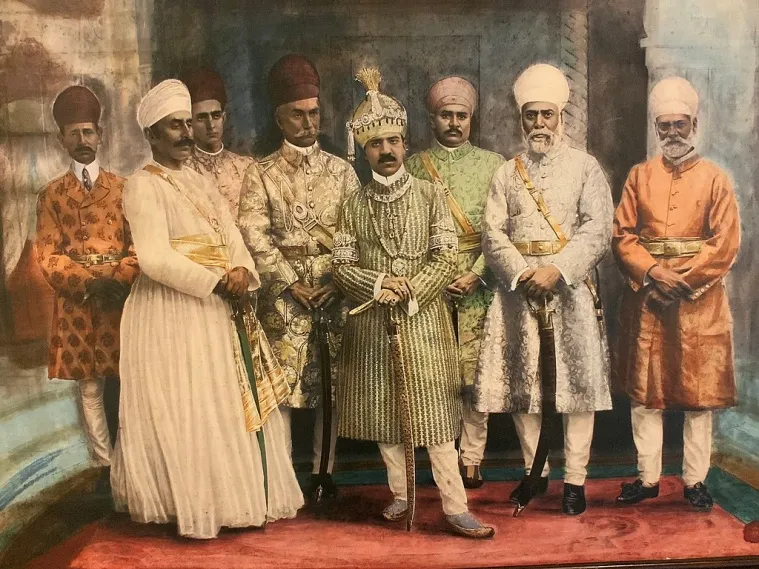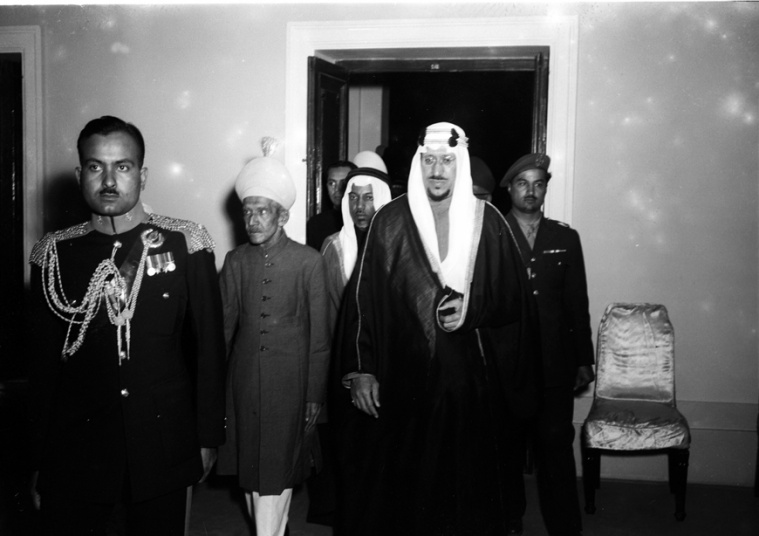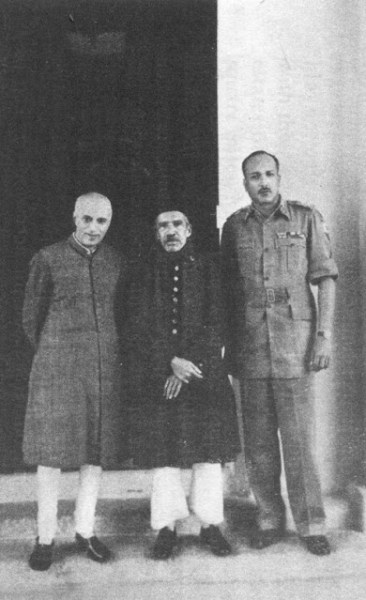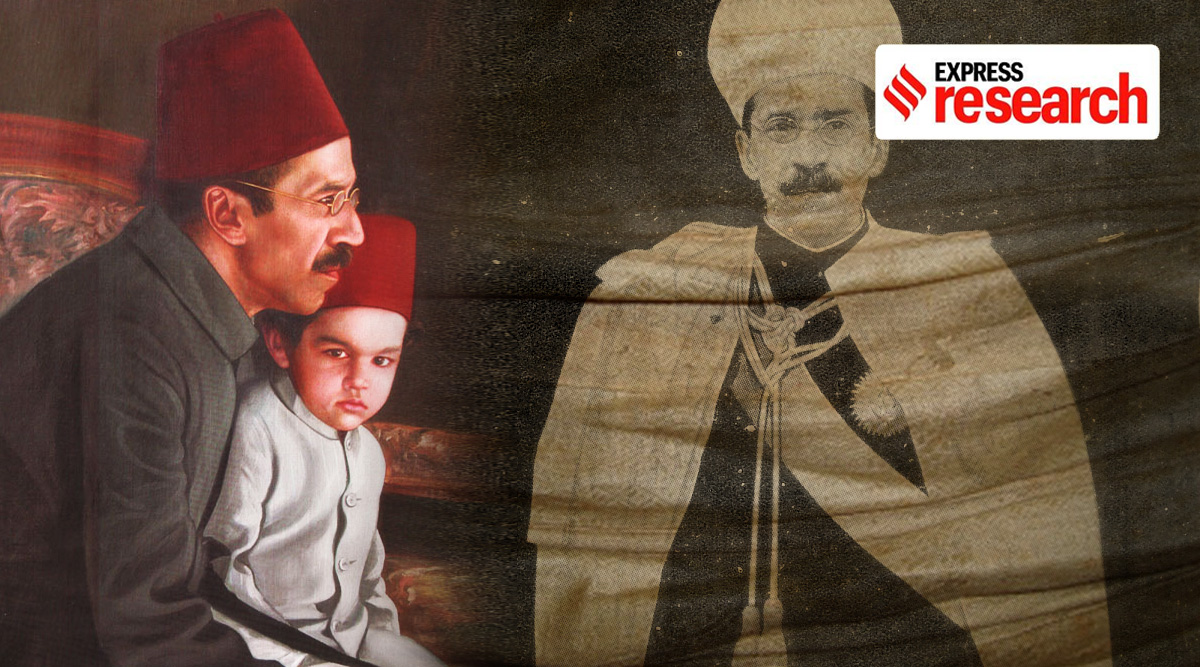On March 3, 1924 a historic decree passed by the Grand National Assembly of Turkey abolished the Ottoman Caliphate or what was recognised as the office of the political and religious head of the Islamic world. News of the order was reported by Britain’s Daily Telegraph as “one of the most astonishing acts of suicidal recklessness in the history of modern and ancient times” as it predicted “the inevitable stirring of the Muslim world”. The last Caliph, Abdülmecid II was deposed and exiled to Switzerland where he spent his days in abject penury.
In India, the Khilafat movement, a pan-Islamist movement under the leadership of Shaukat Ali had been ongoing since 1919 to protect the Ottoman Empire and the office of the Caliph in the aftermath of its defeat in the First World War . The abolition of the Caliphate raised fears among Indian Muslims that the new Caliph would be under British influence and thereafter be used to further imperial interests. Consequently, Ali along with other members of the movement rallied behind the tallest of Muslim leaders in India to be recognised as the next Caliph. The Nizam of Hyderabad, Mir Osman Ali Khan, considered himself to be the head of the largest and the most influential Muslim state in the world, despite his subjects being overwhelmingly Hindu. Although he rejected the calls to assume the office of the Caliph, he did not abandon the idea.

“Over seven generations from 1724, the Nizams created a state that would rival Mecca in importance as a centre for Islamic learning, and eclipse Constantinople as a repository of the Islamic world’s cultural and spiritual legacy,” writes author John Zubrzycki in his book, The last Nizam: The rise and fall of India’s greatest princely state (2012). By the time of the reign of the last Nizam Mir Osman Ali Khan, the stature of Hyderabad as a hub for Muslims from across the world had only strengthened further. “He came to occupy a particular position in the imagination of Muslim elites, not only within India but also within the broader Muslim world,” explains historian Sunil Puroshottam.
The last Nizam as a leader of the Islamic world
The Hyderabad state founded in the 1720s and covering most of central Deccan was under the reign of the Nizams of the Asaf Jah dynasty. The state had evolved a culture in some ways distinct from others in India, with a lot of emphasis on cosmopolitanism and cultural synthesis. This was particularly the case after the administrative and fiscal reforms carried out by Salar Jung I in the 19th century.
The seventh and last Nizam, Mir Osman Ali Khan had ascended to the throne in August 1911 at the age of 25. Apart from the fact that Khan was widely recognised as one of the wealthiest men in the world — his portrait making it to the cover of the Time Magazine in 1937 — he was also held in special regard by the British with whom his state had been in treaty relations since 1798.
 Mir Osman Ali Khan when he ascended the throne at the age of 25. (Wikimedia Commons)
Mir Osman Ali Khan when he ascended the throne at the age of 25. (Wikimedia Commons)
“The Nizam had sent a large number of soldiers from the Hyderabad to the First World War and contributed a lot of money to the Allies,” says Zubrzycki. “For that, he was recognised by the British as the only princely state ruler to be given the title, ‘His exalted highness’.” The Nizams had shown similar support for the British during the 1857 Mutiny as well.
Consequently, the Nizam thought himself to be a cut above the rest. “For instance, he refused to join the Chamber of Princes that was established in 1920 because he did not want to have to take orders from the ‘lesser’ princes,” says Zubrzychki.
Osman Ali Khan’s rule was also marked by a range of social and educational reforms. “He carried out what we can call as Islamic reformism. He started social movements with regard to Muslim women and established modern educational initiatives such as the founding of the Osmania University in 1918,” explains Afsar Mohammad, Professor of South Asia Studies at University of Pensylvannia.
Internationally, Hyderabad gained the reputation of being a hub of Islamic scholarship and a place where a lot of elite, educated Muslims, both from North India and from outside of South Asia found employment. State patronage for writers in Urdu, Persian and Arabic, and employment of Indo-Persianate textual specialists in the bureaucracy increased Hyderabad’s status as an important intersection in Muslim intellectual circuits. Historian Eric Lewis Beverly, in his book Hyderabad, British India and the World (2015), notes that by the end of the 19th century itself, Hyderabad had become “an important destination for mobile Muslim thinkers from South Asia and beyond, and a nodal point in expanding Muslim intellectual networks.” This included several radical thinkers as well.
For instance, Anti-colonial Muslim internationalist Jamal al-Din al-Afghani lived in Hyderabad between 1879 and 1882 after his expulsion from Egypt for criticism of European powers and their allies. “Colonial intelligence reports state that al-Afghani frequented Aligarhi intellectual circles in Hyderabad,” writes Beverly. He adds that the state was becoming an “intellectual meeting ground for competing modernist Muslim thinkers.”
 The Nizam in the company of H.M. the King Saud Bin Masjid Abdulaziz Al Saud of Suadi Arabia during his visit to Hyderabad, 1955. (Wikimedia Commons)
The Nizam in the company of H.M. the King Saud Bin Masjid Abdulaziz Al Saud of Suadi Arabia during his visit to Hyderabad, 1955. (Wikimedia Commons)
The Nizam’s image as a leader of Muslims was set in context of the larger British imperial concerns about Muslim solidarity. Worldwide, Muslim solidarity increased with the emergence of the First World War and the Khilafat Movement in India in alliance with Gandhi’s non-cooperation movement against British actions against the Ottomans. As Beverly notes, “Raj officials pushed for the Nizam to act as a leader of South Asian Muslims and encourage their loyalty to the British war cause, even as the Ottomans fought on the other side.” The Nizam issued a statement promising Indian Muslims’ support to the British, thereby demonstrating his ability to mobilise Muslims beyond his state.
Soon after the Caliphate was abolished, the Nizam was keen on making up for his past actions and re-establishing solidarity with the Caliph. He was advised by the president of his Executive Council to bail out Abdülmecid II, who was in exile at that time and in desperate need of financial help. This, he thought, would enhance the Nizam’s standing across the Muslim world. Accepting his advice, the Nizam proposed a monthly allowance of £300 towards the upkeep of the exiled Caliph and his family.
To further bridge the relationship with the Caliphate, the Nizam, on the suggestion of Shaukat Ali, decided to marry his two sons to the daughter and niece of Abdülmecid. “To drive his point home, Shaukat Ali reminded the Nizam that such a match with the family of the ex-Caliph would ensure that he became the predominant Muslim leader not only in India but in the Islamic world,” writes Zubrzycki. In an interview with indianexpress.com, Zubryzycki says while researching his book he found a note in the British Library saying that Abdülmecid wanted Mukarram Jah, the grandson of Osman Ali Khan and the titular Nizam of Hyderabad, to be the next Caliph.
Muslims of Hyderabad after Independence
Hyderabad, under the Nizams, had been a popular destination for Muslim migrants from outside the subcontinent, many of whom had not only worked there, but also married and started a family.
Professor Taylor C Sherman in her book, Muslim Belonging in Secular India (2015) suggests that “in the late eighteenth century, Hyderabad became a centre of migration for Arabs from the Hadhramaut, who worked as soldiers and scholars in the state.”
More on Hyderabad's accession to India | Behind the freedom of Hyderabad, a struggle against the Nizam
“In the early part of the nineteenth century, the Nizam of Hyderabad provided refuge for Arab, Rohilla, Sikh and Pashtun mercenaries whom the British had expelled after the defeat of the subcontinent’s many warring states,” writes Sherman.
Once in Hyderabad they took up many professions from trade to money lending or got employed in the Nizam’s army or his special Arab irregular forces, the Nazm-i-jamiat, which guarded the palaces of the Nizam and his family. In the late nineteenth century, when Salar Jung I reorganised administration, he brought in many talented administrators from North India, many of whom were graduates from the Mohammedan Anglo-Oriental College, which later became the Aligarh Muslim University.
Consequently, the Hyderabad state had accumulated a significant population of people from Arabia, Afghanistan and North India. For that matter, Arab and Afghan had become administrative categories that gave away one’s social status and entitlement to certain kinds of jobs.
Further, the Nizams also extended their patronage of institutions, both Islamic and otherwise beyond their own territory.
After the Independence of India, when 500 odd princely states were faced with the choice of joining either India or Pakistan, the Nizam decided to opt for an independent Hyderabad. The Nizam’s decision was in no way acceptable to the Congress government in India. Nehru is known to have remarked that “Hyderabad is full of dangerous possibilities.” Vallabhbhai Patel on the other hand had argued that Hyderabad was “situated in India’s belly. How can the belly breathe if it is cut off from the main body?”
In September 1948, after months of negotiations with the Nizam and multiple attempts at destablising the state, including a crippling economic blockade, the Indian government carried out a military invasion in Hyderabad, and thereby annexed it to the Indian union.
 Jawaharlal Nehru, Nizam Mir Sir Osman Ali Khan, and military governor of Hyderabad Jayanto Nath Chaudhuri after Hyderabad’s accession to the Dominion of India. (Wikimedia Commons)
Jawaharlal Nehru, Nizam Mir Sir Osman Ali Khan, and military governor of Hyderabad Jayanto Nath Chaudhuri after Hyderabad’s accession to the Dominion of India. (Wikimedia Commons)
Sherman writes that “when the government of India took power in the state, it sought to sunder these pan-Islamic networks.” The military government formed in the state after the Police Action turned suspicious of all Muslims in the state and assumed them to be Razakars. The Arabs and Afghans were particularly vulnerable in this regard, despite the long histories that some of these families had in the state.
Sherman suggests that by one non-official estimate, “as many as 25,000 Arabs were jailed” in the aftermath of the Indian action, and “around 2,500 Afghans”. “By one estimate there were around 21,000 people to be deported, and most would have to be kept in detention camps until they could be escorted from the country,” she writes.
But the proposed deportation then raised questions about reciprocal reactions towards Indian communities residing overseas. Eventually after nearly three years of negotiations, the government of India deported a very small number of people. Thousands were left to either resettle in Hyderabad or find a way out of the country on their own.
A large-scale migration of Muslims from Hyderabad to countries abroad followed. “Many of them moved to Pakistan, Canada, the United States or the United Kingdom. This diaspora was very intent on keeping the memory and the synthetic culture of old Hyderabad alive,” says Puroshottam.
As far as the Nizam was considered, he was made the ceremonial head of the state as the Rajpramukh. Puroshottam explains that in the nationalist discourse, a demonisation of the Nizam took place, accusing him of running a feudal regime that oppressed the majority community. “In recent years a pushback to this narrative has emerged from the Hyderabad Muslim community that emphasised upon the cultural synthesis that existed under the Nizams,” he says.
More on the history of the princely states' accession | Five princely states that refused to join India after Independence
Zubrzycki says that as titular head of Hyderabad, the Nizam lost most of his actual powers. “His importance as a religious figure did not get altered,” he says. “The Muslims continued to revere him.”
The position of Hyderabad as a centre of Islamic thought and culture also underwent a change. “Hyderabad lost its central place in the global Islamic network,” says Mohammad. “Earlier Deccan was a centre where scholars from Iran, Saudi Arabia and elsewhere would visit to share their work with the Hyderabadi community. The police action in that sense was a stumbling block in the connections between local and global Muslims.”
Further reading:
Sunil Puroshotham, From Raj to Republic: Sovereignty, violence and democracy in India, Stanford University Press, 2021
Eric Lewis Beverley, Hyderabad, British India and the World: Muslim networks and Minor Sovereignty C. 1850-1950, Cambridge University Press, 2015
Most Read 1Chandrayaan-3 mission: Dawn breaks on Moon, all eyes on lander, rover to wake up 2As Indo-Canadian relations sour, anxiety grips Indian students, residents who wish to settle in Canada 3Karan Johar says Sanjay Leela Bhansali did not call him after Rocky Aur Rani: ‘He’s never called me but…’ 4Gadar 2 box office collection day 40: Hit by Shah Rukh Khan’s Jawan onslaught, Sunny Deol movie ends BO run with Rs 45 lakh earning 5Shubh’s tour in India cancelled: Why is the Canada-based singer facing the music?
Omar Khalidi, Muslims in the Deccan: A Historical Survey, Global Media Publications, 2016
John Zubrzycki, The last Nizam: The rise and fall of India’s greatest princely state, Pan Macmillan, 2012
Also ReadThe many arguments for, and against, abortion rights How Lord Ganesha is celebrated outside IndiaKashmir when India got independence: Neither here nor thereHow Thakurs have dominated UP politics since Independence
Taylor C Sherman, Muslim Belonging in Secular India: Negotiating Citizenship in Postcolonial Hyderabad, Cambridge University Press, 2015


